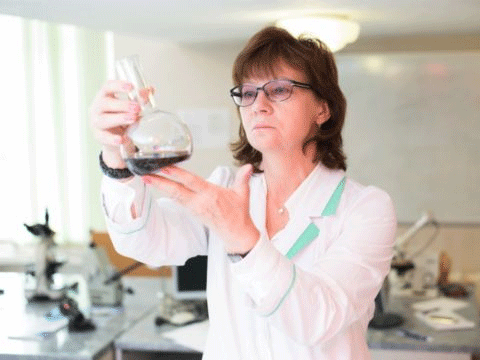The climate in the Chelyabinsk Region has undergone dramatic changes over the last two summers, marked by temperature fluctuations and heavy rainfall that have severely impacted grain production. As a result, farmers have faced significant losses, prompting researchers from South Ural State University (SUSU) to collaborate with the Ministry of Agriculture of the Chelyabinsk Region to explore methods for minimizing food grain losses. This initiative is part of the national project “Science and Universities.”
The global scientific community has raised alarms about the effects of climate change, particularly how it disrupts traditional growing conditions. In regions like Chelyabinsk, increased humidity alters the local epiphytic microflora—organisms that exist naturally in soil and on plants. These changes can lead to a rise in food losses and health risks associated with toxic metabolites from mould growth in grain products.
During the challenging 2023 harvesting campaign, farmers experienced troubling shifts in plant physiology; for instance, wheat began germinating while still on the ear due to excessive soil moisture. Such conditions create a breeding ground for toxic mould fungi, leading to increased mycotoxin levels in the grain. These toxic substances can accumulate in human bodies, posing serious health risks.
While altering the climate is beyond control, ensuring the safety and quality of harvested grains is essential. The Ministry of Agriculture turned to SUSU researchers for solutions. Notably, scientists from the Department of Food Technology and Biotechnology have received a grant from the Russian Science Foundation to study a “Methodology for Reducing the Risks of Food Losses of Grain.” Over the next three years, this research aims to identify innovative techniques to protect future harvests from climate-induced risks.
“Our team is focusing on molecular modelling to understand emerging risks,” states Irina Potoroko, Director of the SUSU School of Medical Biology. “We are also purchasing advanced equipment to identify mould fungi in cereal crops and to monitor internal changes in each grain at the cellular level.”
The research team has been monitoring toxic risks in grains at optimal moisture levels for a year, tracking any changes in internal grain composition, including microflora. The preliminary results are set to be published in December. Looking ahead, the researchers plan to analyze grain samples from the 2024 harvest to evaluate mycotoxin dynamics and test new grain sterilization methods.
One promising avenue under investigation is a hybrid treatment combining cold plasma and ultrasound for disinfecting sprouted grain contaminated with mycotoxins. This method employs low-ionized gas and cavitation techniques to inactivate toxic substances while preserving the grain’s natural benefits and germination capabilities.
“Through extensive trials in our first year, we have established an effective treatment mode for damaged grain using cold plasma,” Potoroko explains. “However, we recognize the need to reduce treatment duration and find parameters for gentle disinfection that do not compromise grain integrity. The complexity arises from the increasing variety of mycotoxin forms, requiring tailored treatment modes for each.”
Currently, the Chelyabinsk researchers are striving to develop simpler and faster industrial processing methods for grain. Throughout the grant’s duration, they aim to translate fundamental scientific findings into practical solutions for the regional agro-industrial complex.
The efforts by SUSU scientists to address climate-induced challenges in grain production reflect a proactive approach to safeguarding food supplies. By combining innovative technologies with a focus on mycotoxin management, these researchers are paving the way for a more resilient agricultural system in the Chelyabinsk Region. Their work underscores the importance of scientific collaboration in addressing pressing agricultural issues posed by climate change.
Error




